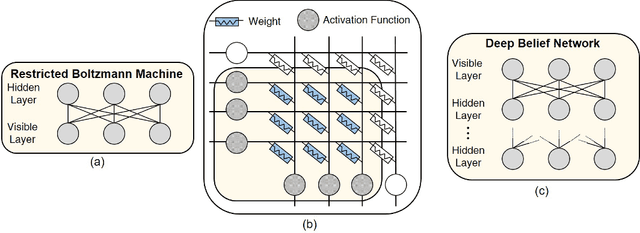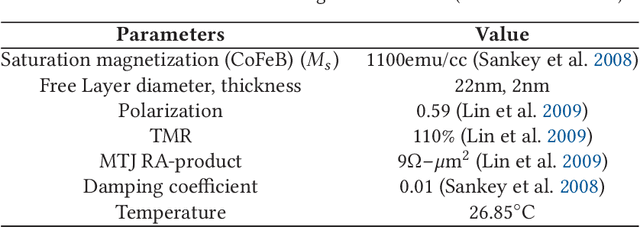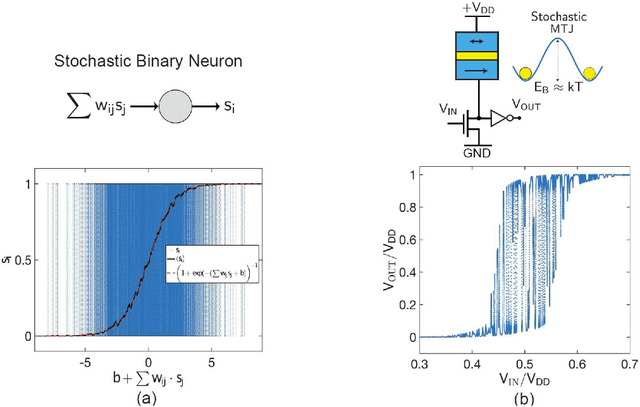Supriyo Datta
Energy-Efficient Supervised Learning with a Binary Stochastic Forward-Forward Algorithm
Jul 09, 2025



Abstract:Reducing energy consumption has become a pressing need for modern machine learning, which has achieved many of its most impressive results by scaling to larger and more energy-consumptive neural networks. Unfortunately, the main algorithm for training such networks, backpropagation, poses significant challenges for custom hardware accelerators, due to both its serial dependencies and the memory footprint needed to store forward activations for the backward pass. Alternatives to backprop, although less effective, do exist; here the main computational bottleneck becomes matrix multiplication. In this study, we derive forward-forward algorithms for binary, stochastic units. Binarization of the activations transforms matrix multiplications into indexing operations, which can be executed efficiently in hardware. Stochasticity, combined with tied weights across units with different biases, bypasses the information bottleneck imposed by binary units. Furthermore, although slow and expensive in traditional hardware, binary sampling that is very fast can be implemented cheaply with p-bits (probabilistic bits), novel devices made up of unstable magnets. We evaluate our proposed algorithms on the MNIST, Fashion-MNIST, and CIFAR-10 datasets, showing that its performance is close to real-valued forward-forward, but with an estimated energy savings of about one order of magnitude.
Composable Probabilistic Inference Networks Using MRAM-based Stochastic Neurons
Nov 28, 2018



Abstract:Magnetoresistive random access memory (MRAM) technologies with thermally unstable nanomagnets are leveraged to develop an intrinsic stochastic neuron as a building block for restricted Boltzmann machines (RBMs) to form deep belief networks (DBNs). The embedded MRAM-based neuron is modeled using precise physics equations. The simulation results exhibit the desired sigmoidal relation between the input voltages and probability of the output state. A probabilistic inference network simulator (PIN-Sim) is developed to realize a circuit-level model of an RBM utilizing resistive crossbar arrays along with differential amplifiers to implement the positive and negative weight values. The PIN-Sim is composed of five main blocks to train a DBN, evaluate its accuracy, and measure its power consumption. The MNIST dataset is leveraged to investigate the energy and accuracy tradeoffs of seven distinct network topologies in SPICE using the 14nm HP-FinFET technology library with the nominal voltage of 0.8V, in which an MRAM-based neuron is used as the activation function. The software and hardware level simulations indicate that a $784\times200\times10$ topology can achieve less than 5% error rates with $\sim400 pJ$ energy consumption. The error rates can be reduced to 2.5% by using a $784\times500\times500\times500\times10$ DBN at the cost of $\sim10\times$ higher energy consumption and significant area overhead. Finally, the effects of specific hardware-level parameters on power dissipation and accuracy tradeoffs are identified via the developed PIN-Sim framework.
 Add to Chrome
Add to Chrome Add to Firefox
Add to Firefox Add to Edge
Add to Edge